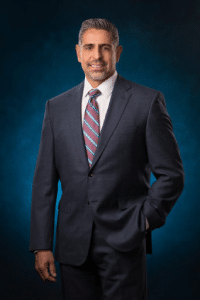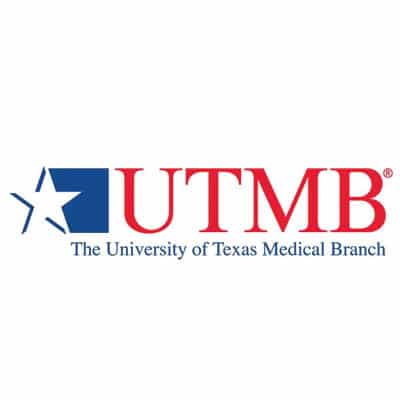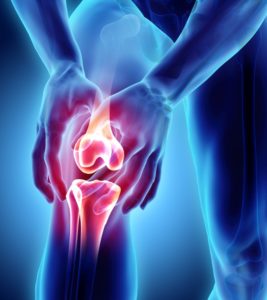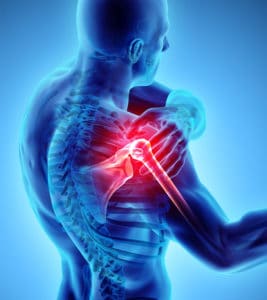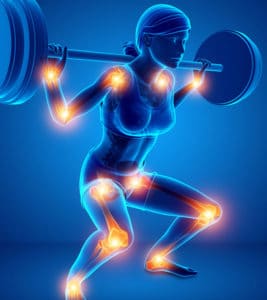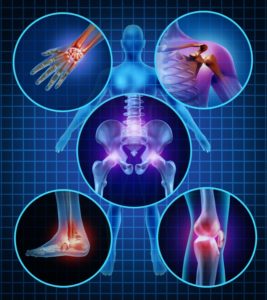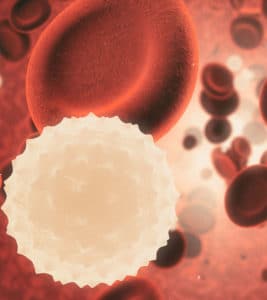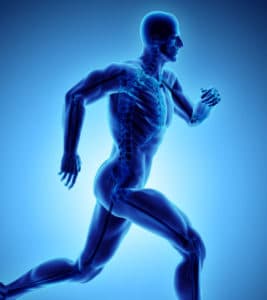Shoulder Fracture
Shoulder fractures are usually caused by impact injuries such as direct blows, falls or vehicular accidents. When one or more of these bones fracture, severe pain occurs and movement is impaired. When a shoulder is fractured, soft tissues may be damaged as well.
Anatomy Of The Shoulder
There are three bones in the shoulder: the clavicle or collarbone, the proximal humerus or top of the arm bone, and the scapula or shoulder blade. There are also three joints where these bones connect: the glenohumeral joint, acromioclavicular joint and the sternoclavicular joint. The ball and socket arrangement of the shoulder enables a wide range of motion. It also, unfortunately, includes a complex arrangement of bones, muscles and ligaments that may be damaged.
Causes Of Shoulder Fractures
There are varying causes for shoulder fractures, depending on the particular bone damaged, as follows.
Fractures Of The Humerus
Called proximal humeral fractures, these often occur when a person falls on an outstretched arm. These are most common in elderly people suffering from osteoporosis.
Clavicle Fractures
Collarbone fractures are a common injury in children and athletes. The collarbone doesn’t completely harden until people reach the age of about 20, so it is fairly easy for the bone to break in babies during childbirth or in children after a direct blow or fall. Athletes may fracture the bone from a direct blow or from a hard fall, where the jolt of impact travels up the arm to the clavicle.
Fractures Of The Scapula
Shoulder blade fractures are very rare. Because of the joint’s mobility and the number of muscles protecting it, it is well protected from fracture. It takes a significant amount of force to break the scapula. Scapular fractures are usually only seen after a high-speed vehicular accident or a fall from a great height and are frequently accompanied by other, often life-threatening, injuries. Crushing injuries, such as those resulting from factory or forestry accidents, can also cause a scapular fracture, as can direct contact injuries which occur during boxing.
Symptoms Of Shoulder Fractures
Symptoms of shoulder fracture include impaired mobility and severe pain worsened by arm movement. To some degree the location of the pain and limited range of mobility are diagnostic since they vary according to where the fracture has taken place. Symptoms of a clavicle fracture, for example, include downward and forward sagging of the shoulder and a bump or tent over the injury site. All shoulder fractures involve one or more of the following symptoms:
- Severe pain
- Swelling or bruising of the shoulder.
- Deformity at the site of the fracture
- Inability to move the arm without increased pain
- Grinding sensation when the shoulder is moved
Diagnosis Of Shoulder Fracture
Shoulder fractures are usually diagnosed through X-rays. Sometimes more sophisticated imaging techniques, such as CT scans are used. It is important for the diagnosis to be accurate and for the distinction between a shoulder fracture and a dislocation to be made.
Rehabilitation For Shoulder Fracture
Although the methods used to treat shoulder fractures vary, rehabilitation is always necessary after the initial treatment, to restore full movement and mobility and help the patient return to all usual activities. After the shoulder has healed from the initial treatment for the fracture, a physical therapy regimen is implemented to strengthen muscles and increase mobility. Without proper rehabilitation, complications such as chronic pain, inflammation and weakness, may cause difficulty moving the arm and shoulder and performing regular tasks.
Nonsurgical Rehabilitation For Shoulder Fracture
A fractured shoulder requires a period of immobilization with a sling or shoulder immobilizer for about 4 to 6 weeks. If the injury was not severe, the healing process occurs fairly rapidly and function may be regained at about 4 weeks after the initial injury. Shoulder exercises are usually necessary and focus on decreasing stiffness, improving range of motion, and helping the patient regain muscle strength. The physical therapist may also make suggestions and create exercises for improving posture and shoulder alignment as well advise patients on how to perform activities and exercises without endangering the injured area.
Rehabilitation After Shoulder Fracture Surgery
After surgery, the shoulder is susceptible to reinjury, so it is very important to closely follow rehabilitation guidelines to ensure proper healing and regain full range of motion to the shoulder. Physical therapy is an essential part of rehabilitation after shoulder fracture surgery, to help restore full function to the shoulder.
Physical therapy often begins shortly after surgery to help restore strength and movement and allow patients to gradually resume their regular activities. Initial physical therapy treatments may include ice, electrical stimulation and massage, to help control pain and swelling. As the healing begins, exercises may be used to increase movement and mobility. Physical therapy exercises focus on improving the strength and control of shoulder muscles and the muscles around the shoulder blade. Treatment may include:
- Muscle strengthening exercises
- Shoulder girdle stabilization exercises
- Gradual weight-bearing activities
- Range of motion exercises
A rehabilitation program after shoulder fracture surgery may be directly linked to the severity of the initial injury and the type of repair that was performed. Severe injuries that require more complex surgery may have a longer period of rehabilitation than those that require less invasive surgery. Most patients will follow a physical therapy routine and receive treatment for about 4 months following surgery. At that time, most patients can return to all regular physical activity.

